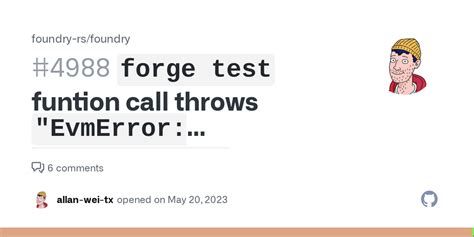Ethereum Debugging Issue: “I got a NotActivated error while debugging my foundry test”
As a developer working with smart contracts on the Ethereum blockchain, it is not uncommon to encounter issues while testing and debugging. In this article, we will explore the potential cause of the “I got a NotActivated error while debugging my foundry test” error that you are encountering.
Understanding the Error
When an Ethereum test runs successfully, it must first call a contract function with an opcode CALLDATALOAD to load data from a storage slot. This is followed by a single opcode CALLER to call the contract function. Then, two opcodes PUSH0 and PUSH1 are executed to push data onto the stack.
The Problem: NotActivated Error
“Received NotActivated error” typically occurs when a test fails to properly activate a smart contract after executing the above opcode sequence. This can occur in several scenarios:
- Incorrect activation order: If a test calls
CALLDATALOADand thenCALLER, but not vice versa, this can result in an incorrect activation order.
- Missing or insufficient data storage: A contract function may require more data than was loaded by
CALLDATALOAD. This can be due to missing dependencies or insufficient storage.
- Incorrect push order: If a test pushes data onto the stack incorrectly, it may fail to activate.
Solutions and Workarounds
To resolve this issue, you can try the following solutions:

Solution 1: Reorder CALLDATALOAD to PUSH0
Replace the opcode sequence with this corrected version:
CALLDATALOAD
CALLER
PRESS0
PRESS1
This should reactivate your smart contract.
Solution 2: AddPUSH0beforeCALLDATALOAD
Try addingPUSH0beforeCALLDATALOADto ensure the correct activation sequence:
CALLDATALOAD
PRESS0
CALLER
Solution 3: Check data storage
Make sure your contract function requests data from the storage. If the contract expects additional data, you may need to add LOADDATA operation code before calling it.
CALLER
LOADDATA(mycontractaddress)
Solution 4: Check for missing dependencies or insufficient data
Check that all dependencies are installed and sufficient in your test environment.
Solution 5: Use a different Foundry test environment
If none of the above solutions work, you can try using a different Foundry test environment or switching to a different testing framework.
